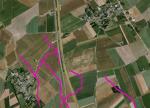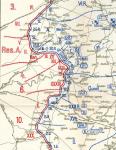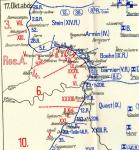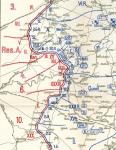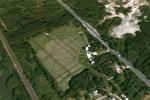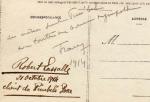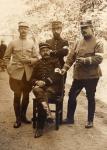-
Posts
3,687 -
Joined
-
Last visited
-
Days Won
2
Content Type
Profiles
Forums
Blogs
Gallery
Events
Store
Everything posted by Tony
-
:D :D Are they wearing standard infantry uniforms? What would the colour of the uniform on the right be, dark blue? I thought they wore red trousers early on in the war. Tony
-
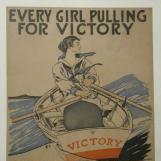
My babies....
Tony replied to Chris Boonzaier's topic in Germany: Imperial Uniforms, Headwear, Insignia & Personal Equipment
When did you get the Lewis gun? The nearest I've been to one was a rusty magazine in Ypres. Expect me round one day for a play with it. Tony -

WORLD WAR 2 - SERVICES WATCH
Tony replied to Mervyn Mitton's topic in Great Britain: Militaria: Badges, Uniforms & Equipment
By the way, GSTP may also be the abbreviation for General Service Temporary Pattern due to these watches being not of standard government issue e.g. bought overseas at the hurry up. Tony -

WORLD WAR 2 - SERVICES WATCH
Tony replied to Mervyn Mitton's topic in Great Britain: Militaria: Badges, Uniforms & Equipment
A cracking watch and with a new glass it'll look fantastic. Only 5000 of these watches with the serial number 41774472 were made, the year of manufacture was 1942. It's an open face 3/4 plate (meaning the balance wheel is at the same level as the other cogs) and pendant set (standard watch movement winder and hand adjustment) watch. Elgin is a very well known US watchmaker, the company has been making watches since the US civil war which goes some way to explain the quality. I didn't see any repairer's ID marks so it has probably worked happily all its life. I did wonder if the 49 was a jeweller's repair/overhaul ID mark but watchmakers usually add the tiniest engraving to the inside of the back cover. Tony -
That's what I thought too Tom just after posting the photo. They look like a Chassepot as opposed to a Lebel don't they. Thanks Terry, Maybe he died or the beer at Pimbels could have been terrible. Tony
-

A Rifleman, DoW 19 Oct. 1016
Tony replied to Tony's topic in Great Britain: Research, Documentation & History
Hello Paul, I'm afraid I live quite a way from Sipson, I also believe Sipson is one of the parishes which is to be turned into another runway for Heathrow. No doubt the church has a memorial to all the men of the village who never came back home, it'd be great to be able to go there and look around. Tony -

A Rifleman, DoW 19 Oct. 1016
Tony replied to Tony's topic in Great Britain: Research, Documentation & History
Anyone who has ever visited the battlefields in France or Belgium will know that the places mentioned in battles that dragged on for months are only a few minutes apart when travelling by car. It always makes me wonder if Blackadder Goes Fourth was actually filmed based on a serving officers daily diary or not. The Soldiers Died CD shows 11936 ORs and 717 officers serving in the British army in all theatres died during the first 19 days of October (that's averaging more than 600 men per day), Ernest Stanley Gard was just 1 of 360 ORs and 24 officers who, on 19.10.16 would no longer suffer in the trenches, would never see their parents, wife, girlfriend, home, friends or another sunset again. I don't know how many men serving in the Canadian, S. African, ANZAC, Indian armies as well as the RN and RFC also lost their lives in those few days. If anyone knows of a better translation for Flachbahngeschütze please let me know. Tony -

A Rifleman, DoW 19 Oct. 1016
Tony replied to Tony's topic in Great Britain: Research, Documentation & History
This photo shows the area between Les Bouefs and Le Transloy today, I've attempted to show the approximate position of the British frontline trenches (marked as German trenches above in the scan of an original map from September 1916). The Lille to Paris motorway which I've driven along many times but never further south than that old Roman road exit leading to St. Quentin in the east and Amien in the west, cuts through many of the old trenches. -

A Rifleman, DoW 19 Oct. 1016
Tony replied to Tony's topic in Great Britain: Research, Documentation & History
From the CWGC: Le Transloy The Battles of the Somme; the Battle of the Transloy Ridges, 1 -18 October 1916. Heartened by the occupation of much of the Thiepval Ridge, Haig determined to continue large-scale offensive operations into the autumn. The Battle of the Transloy Ridges represented Fourth Army's part in this grand design, and its constituent costly attacks were intended to coincide with simultaneous advances by the Reserve Army planned for early October. The fighting took place during worsening weather and dreadful battlefield conditions. Fourth Army's objectives necessitated, as a preliminary, the taking of Eaucourt L'Abbaye and an advance on III Corps entire front was launched, after a seven-hour bombardment, at 3.15pm on 1 October. The attack met fierce German resistance and it was not until the afternoon of 3 October that the objectives were secured. Rawlinson’s follow up attack was delayed by atrocious weather. Starting at 1.45pm on 7 October the advance involved six divisions and resulted in heavy British casualties and little success except for 23rd Division's capture of Le Sars. Continuous rain during the night hampered the removal of casualties and further forward moves. The failure to secure original battle objectives led to a renewed major assault on the afternoon of 12 October when infantry on Fourth Army’s right floundered towards German trench lines in front of Le Transloy, while formations on the left slogged towards the Butte de Warlencourt. Despite the slightest of gains (measured in hard fought for trench yards) the operation was not successful. Orders for a fresh attack, issued late on 13 October, ignored the desperate conditions and physical state of the attacking troops. The subsequent early morning assault on 18 October (well before daylight) witnessed heroic efforts to advance but minimal were made against resolute defenders well supported by accurate artillery fire. -

A Rifleman, DoW 19 Oct. 1016
Tony replied to Tony's topic in Great Britain: Research, Documentation & History
The following is a report from the New York Times. 301915672.pdf -

A Rifleman, DoW 19 Oct. 1016
Tony replied to Tony's topic in Great Britain: Research, Documentation & History
-

A Rifleman, DoW 19 Oct. 1016
Tony replied to Tony's topic in Great Britain: Research, Documentation & History
-

A Rifleman, DoW 19 Oct. 1016
Tony replied to Tony's topic in Great Britain: Research, Documentation & History
-

A Rifleman, DoW 19 Oct. 1016
Tony replied to Tony's topic in Great Britain: Research, Documentation & History
From the German front: A major offensive against the 1st Army started on 7.10.16, from early afternoon on the front between Ancre and Bouchavesnes waves of enemy infantry, tanks and the RFC attacked nonstop into the night. Although vastly outnumbered, the heroic resistance of Gruppen Stein (26 Würtemberg Res. Div.), Armin (Marine Inf. Brig., 4th Ersatz, 6th and 7th Res. Div.), Boehn (15th, 17th and 18th Res. Div.), and Garnier (10th Res., 113th Inf. and 9th Res. Div.) saved the day. Only the village of Le Sars and advanced positions in front of Le Transloy and Sailly were lost. After hand to hand fighting during the night, the 8th of October began with unsuccessful enemy thrusts near Courcelette, Le Sars and Rancourt finishing with a heavy French attack against Gruppe Garnier. This was repulsed with great losses to both sides. The enemy reported more than 1600 prisoners. German attacks near Le Sars, Gueudecourt and Rancourt resulted in the capture of about 175 prisoners. 9th October 1916 A report from Army Group Crown Prince Rupprecht speculated that British and French troops would endevour to increase their attacks on the Bapaume to Bertincourt front and reduce their efforts in the Mont St. Quentin to Peronne area. This was proven to be true with almost immediate effect. Between the 9th and 11th October the enemy made small advances between Thiepval and Bouchavesnes and although they only gained a small amount of ground, around 1700 men were taken prisoner. British troops in the north between Gommecourt and Beaumont Hamel began to liven up again by attacking the position of the 52 Inf. and 28 Res. Div. with a heavy barrage and clouds of gas. A report from the 1st Div. calls them „our worst enemy“ and goes on to say „ .... ever superior in ammunition especially heavy caliber. They smash our positions, cause the most casualties, hinder traffic behind the lines and rob our troops of necessary rest. Therefore our low trajectory artillery pieces (Flachbahngeschütze) which are already being transported here, will be used primarily to prevent enemy ammunition supplies getting through.“ By this time Ernest Gard had probably been wounded and taken out of the line. The battle carried on for several more weeks before officially ending on 18.11.1916. The maps below show the advance, if you can call it that, made by the allies in the Les Bouefs – Le Transloy area between the end of September and November. -

A Rifleman, DoW 19 Oct. 1016
Tony replied to Tony's topic in Great Britain: Research, Documentation & History
Ernest was born in 1897 and lived at 10 Belmont Rd. in St. Peter Port Guernsey along with his brother John, parents and Ada the servant. At some stage before 1914 the family moved to the mainland, taking up residence at Home Farm in Sipson, Middx. Ernest may have taken part in the first day of the Somme at Gommecourt (a diversionary attack) where the 1/5 suffered something like 588 casualties so I would think the 5th London Regt. LRB which appears to have been out of the line from 2.7.16 to 2.9.16 must have been made up of many new drafts by the time they went back into battle. The battalion served and fought in the following areas between the beginning of July 1916 and end of October 1916: July 1st Gommecourt 2nd Bayencourt 3rd St Amand 6th Fonquevillers 8th Hannescamps 16th Bienvillers 19th Hannescamps 23rd Bienvillers 30th Hannescamps. August 7th St. Amand 15th Hannescamps 20th St. Amand 21st Sus St. Leger 22nd Wavans 23rd Cauchy. September 3rd Corbie 4th Happy Valley 6th Chimpanzee valley 7th Falfemont Farm Line 8th Leuze Wood attack 11th Citadel Hutments 12th Billon Farm 13th German Trenches 15th Angle Wood 16th Loop Trench 18th Angle Wood 24th Trench in front of Combles 26th Combles 27th Meaulte 29th Talus Bois 30th Guillemont. October 2nd Les Bouefs 4th Between Trones and Bernafay Woods 8th Attack on Les Bouefs 9th Trones Wood 10th Mansel Copse 12th Picquigny 21st Huppy 23rd Pont Remy 24th Paradis 27th Croix Barbee 28th Richebourg L'Avoue With help I've received from members of the Great War Forum, it seems likely that Ernest Gard may have been wounded either during the attack on Les Bouefs, Trones Wood or Mansel Copse. According to Soldiers Died, the 1/5 LRB suffered 154 casualties in the first 19 days of October 1916 but only shows details for 149 men. I'm not sure if the numbers for officers are correct as research carried out by NigelS on the GWF shows 11 officers killed and 9 wounded on 8.10.16. Soldiers Died CD (which does have mistakes) shows 7 officers killed and according to the CWGC only 2 have known graves, the other 5 are remembered on the Thiepval Memorial to the missing. The numbers and dates below are from the above mentioned CD and show the numbers of men who died, many of them were recently transferred from the Middx. Regt.: 4.10.16 – 2 ORs killed in action 8.10.16 – 4 ORs killed in action and 1 OR died of wounds 6 2/Lieut. and 1 Lieut. killed in action 9.10.16 – 125 ORs killed in action and 1 OR died of wounds 10.10.16 – 1 OR died of wounds 11.10.16 – 1 OR died of wounds 12.10.16 – 2 ORs died of wounds 13.10.16 – 1 OR died of wounds 14.10.16 – 1 OR died of wounds 15.10.16 – 2 ORs died of wounds 17.10.16 – 1 OR died of wounds 18.10.16 – 1 OR died at home 19.10.16 – Ernest Stanley Gard dies of wounds in Etaples -

A Rifleman, DoW 19 Oct. 1016
Tony replied to Tony's topic in Great Britain: Research, Documentation & History
Etaples had eleven general, one stationary, four Red Cross hospitals and a convalescent depot, all of which could deal with 22,000 wounded or sick. The British War Cemetery at Etaples has 11479 identified graves, some of which are from the early months of 1940 including German war dead. -

A Rifleman, DoW 19 Oct. 1016
Tony posted a topic in Great Britain: Research, Documentation & History
Not quite the recipient's story as I don't have anything that was awarded to him for his service to King and Empire. 3702 Rfm. Ernest Stanley Gard of 1/5 City of London Rifle Brigade the London Regt. died in hospital on 19.10.16 in Etaples aged 19 from wounds received in action. He was the son of Rev. John and Elizabeth Gard, of Home Farm, Sipson, Middlesex. It's unusual to find memorial cards for British soldiers, Ernest's father the Reverend John Gard is probably the reason this card went to print. -
I don't even know if these men are soldiers, firemen or something else. The card is dated 21.10.14 and I'd be very grateful if anyone can translate it for me. To me the writing in ink looks like Robert Lassale 21st Oct. 1914 customer of Pimbels Bar. Tony
-
I picked the following postcards up recently as to me, they look so classically French. Though I'm afraid to say I know little, well, nothing about the French army. The first shows some medical officers (I'm assuming). Is the man seated cavalry? The second is dated 15 X bre 1914, 15.10.14 I imagine. As they're carrying swords what rank might they have? Or are they bayonets? Tony
-

Imperial Russia Are these men Privates, NCOs or officers?
Tony replied to Tony's topic in Russia: Imperial
-

Imperial Russia Are these men Privates, NCOs or officers?
Tony replied to Tony's topic in Russia: Imperial
Thanks Paul. Would you have any idea why these men could have been in the UK? It's noted on the reverse in modern handwriting that they were in Lewisham military hospital but I don't know how true this may be. Tony -
Hello, Can anyone tell me anything about these two men from their uniforms? Are they infantry, NCOs, officers? The photo was taken in England, on the reverse in English is: I give you this photograph remembrance. Yours truly V. Mogiluy (?) Tony



